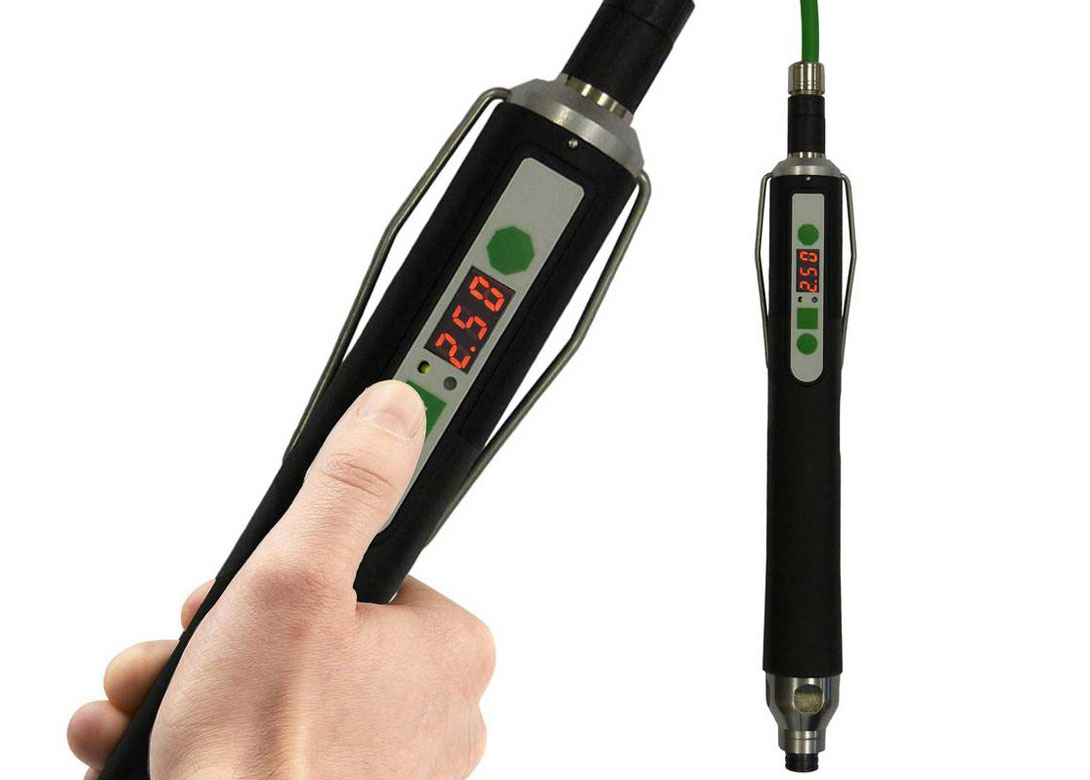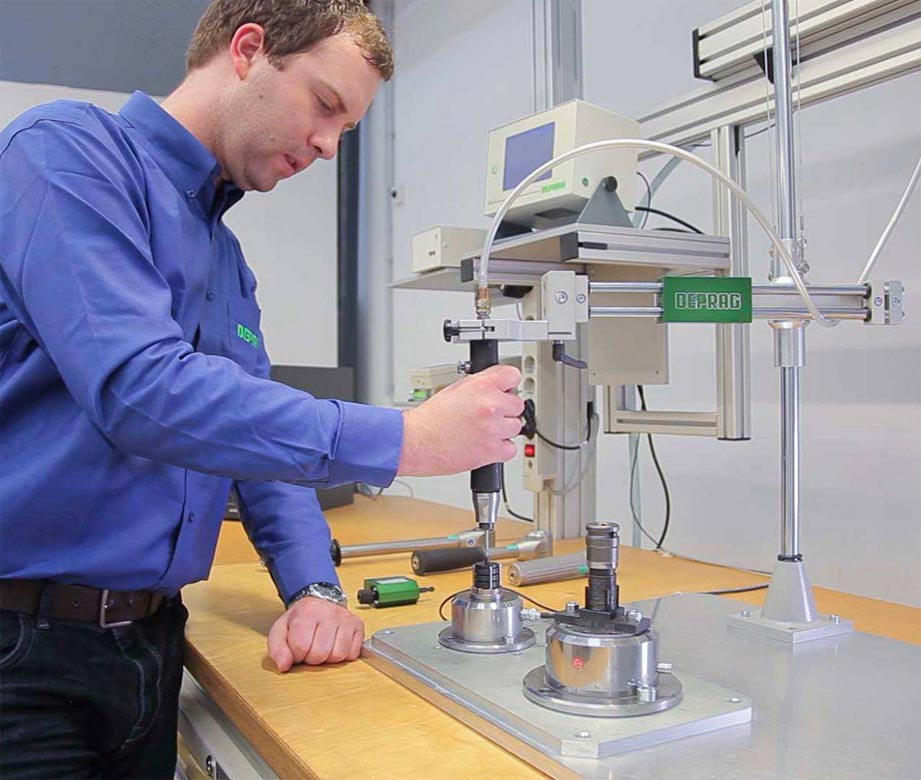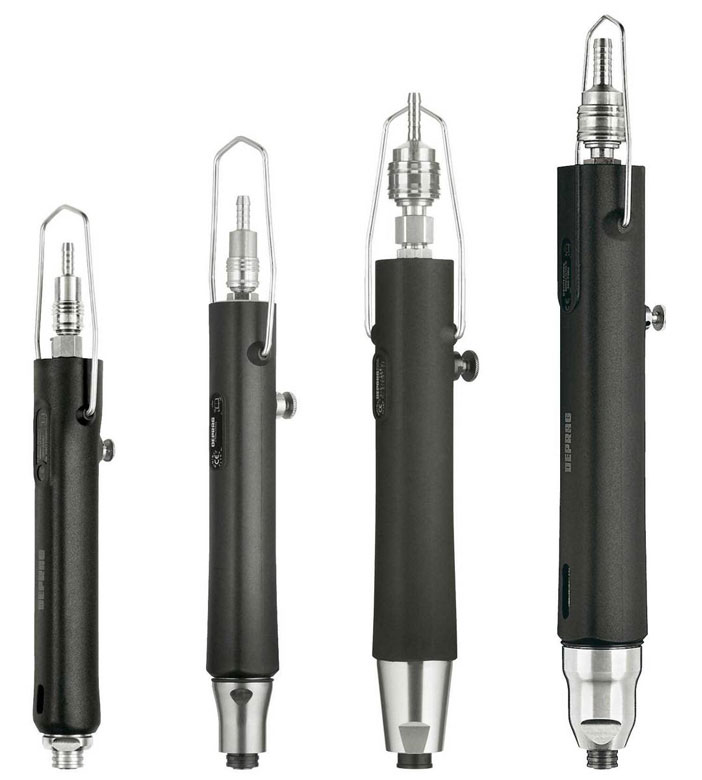
In the world of technology, screw assembly is the procedure most frequently used to join components. Every manufacturer fears errors in assembly. If there is a need for product recall due to faulty screw connections, the economic impact is considerable. Along with the appropriate training of personnel and the use of high-quality materials, the selection of the most suitable screwdriving tool for each application plays a major role in ensuring process reliability during assembly.
A screwdriving task may only be executed reliably if precision screwdriving tools are used and the screwdriver has been optimally adapted to the application. Therefore, when making a selection, there is a wide range of criteria to consider – from flexibility and process reliability, to torque accuracy, production data acquisition, documentation requirements, investment needs, operating costs etc. In order to determine the necessary tightening parameters and to identify approaches to solutions, a comprehensive screw joint analysis is recommended.
The important issues to address during screw joint analysis are the ideal torque, the correct speed and the most suitable screwdriving tool for the application. “In order to determine the best way to assemble a component, we need to destroy that component. We deliberately use excessive torque so that the screw or component breaks, thereby enabling us to establish the overload torque,” explains Tobias Dirrigl, DEPRAG application engineer. This process is then repeated, using original components, until a reliable result has been ascertained.
Friction is generated as the screw is tightened. The extent of the friction is dependent on both the geometry of the fastener, and the material of the component. The friction changes the relationship between the torque and the pre-load force attained. It is one of the great unknown factors when defining the most suitable tightening parameters. The technician figures this out in the lab by repeatedly loosening and tightening the assembled screw. By comparing the curve characteristics of the torque during the first and second screwdriving procedure, he is able to detect potential friction losses.

Seating conditions are also recorded, for example when a motor is mounted on a pump unit with a silicone gasket. Even if the tightening torque has been designed so that the required pre-load force is attained, it will gradually be lost due to the “seating” of the silicone. Consequently: The pump is leaky. In this type of “soft joint” application, the technician tightens the screw to the defined tightening torque and then retightens it after a certain amount of time. The “prevailing torque” provides information about the seating conditions and their effect on the pre-load force. In such cases, application technicians recommend that screw assembly is carried out in two phases.
There are also other application-specific characteristics: If, for example, two sheets of metal are joined together but their holes are not quite positioned so that they cover one another, then a high torque is required for the sheets to align precisely. At the end of the screwdriving process, if the holes line up with one another, a low torque is all that is needed for the final tightening. When assembling with a continuously high torque the destructive overload torque could be reached unintentionally and the screw or component could be deformed. A screw joint analysis will bring this problem to light and determine the most reliable parameters and sequences.
The screw joint analysis is also of utmost importance when selecting the optimal tightening procedure: Direct assemblies of metal or plastic components with thread-forming or cutting screws may result in varying screw-in torques. The use of a torque controlled tightening procedure can cause fluctuations in the resulting pre-load force even if shut-off accuracy is as precise as possible. The adaptive screwdriving procedure DEPRAG Clamp Force Control (CFC) provides the solution: it evaluates torque progression during the screw-in process and detects the point that head seating occurs. A difference torque (or difference angle) inferred from the seating point allows a significantly improved constancy of the pre-load force.
After a comprehensive series of tests, the manufacturer receives a recommendation of the best screwdriving parameters and the most suitable screwdriving tool for the application. As well as spindle screwdrivers for industrial systems, a key focus is also on handheld screwdrivers for industrial series production. The screwdrivers can be used in combination with DEPRAG measurement technology or tried and tested DEPRAG screw-feeding systems. “We can find the best solution for any screw joint,” states Tobias.

The handheld MINIMAT/MICROMAT screwdriver product range covers the entire spectrum of challenging industrial screwdriving tasks. With torques from 0.02Nm to 65Nm, designs for any application and cutting-edge drive technology, maximum process reliably is achieved at every stage. Depending on the application, the customer has the choice of straight design for vertical drive directions, pistol grip for horizontal screw joints and angle design for confined spaces or high torques. As well as the well established pneumatic screwdrivers, the comprehensive portfolio also includes a series of exceptional electric screwdrivers.
The sensor-guided MINIMAT-EC-Servo screwdriver driven by a reliable, low-maintenance brushless EC motor provides maximum process reliability for manual work stations in industrial production. Ultimate flexibility is realised using this drive technology and the corresponding controller, even on manual work stations. All essential processing parameters are set, monitored and documented on the controller. It even enables the realisation of several different torques within one assembly cycle.
The MINIMAT-EC series for torques from 0.01Nm to 25Nm also features a brushless electric drive and corresponding power-off controller. The processing parameters stored for the assembly task are edited, documented and evaluated using the screwdriver. Both screwdriver families in EC and EC-Servo design allow connection to a superior control system, e.g. for the recording and evaluation of statistical processing data.
The DEPRAG electric screwdriver MINIMAT-ED is a handy, flexible all-rounder. Once the torque set on the screwdriver has been reached, the tool shuts off precisely and reliably. The operator simply enters the required torque directly on the screwdriver where it appears on a clear display and is easy to adjust or check. The MINIMAT-ED is particularly suitable for work stations with varying tightening parameters. It is just as feasible to use it within a controller or control cabinet structure, as in an industrial reworking station for large series production or in the repair shop.
The DEPRAG air screwdriver MINIMAT/MICROMAT with pneumatic drive is a universal solution for many screwdriving tasks. Its specially designed high precision shut-off clutch allows torque accuracy of less than plus/minus 3% standard deviation. These figures are maintained even after millions of cycles. The special DEPRAG shut-off clutch prevents the type of unregulated torque increases found in many conventional shut-off screwdrivers. DEPRAG screwdrivers can be preset so that they are uninfluenced by fluctuations in pressure and not reliant on certain screw joints and can also be tested using appropriate measurement transducers or measurement devices.

There are also a vast number of handheld screwdrivers available for special applications: DEPRAG SENSOMAT, a special design for self-tapping, thread cutting or self-drilling through bolts. Due to the high friction caused by these screws, the screw-in torque can be close to the fixing torque or even higher. The screwdriver has been adapted to deal with these issues and initially turns the screws with full power and then releases the shut-off clutch shortly before seating of the screw head. In this way the screwdriver accurately reaches the preset final torque and prevents destructive stripping of the screw.
Impulse screwdrivers with shut-off mechanism are, in essence, an impact wrench but with a hydraulic impulse striking mechanism. The impulse screwdriver features a high torque output, excellent torque repeatability and a low back-out torque. They are considerably quieter than a device with mechanical striking mechanism.
DEPRAG impulse screwdrivers are equipped with pistol or fist grip. The hammer is directly connected to the rotor in these gearless impulse screwdrivers. Energy is “collected” during each rotation which is transmitted as a powerful impulse to the screwdriving spindle via a moveable clutch-claw.
The depth stop screwdriver MINIMAT-T provides accurate assembly at a precise depth, for example on those screw joints where fixture of wood to wood is required or for the assembly of drywall. An adjustable finder is set to recognise a predefined depth and activate the shut-off clutch.
In contrast, the VARIOMAT has been specifically designed for the wood-processing industry. The operator can use this tool both to drill holes and assemble screws. It has a wide range of accessories, opening up a whole spectrum of application possibilities.
The RECYCLING screwdriver is a specially designed tool for the recycling industry. Before the chemical and thermal handling of electronic scrap material you need to start by disassembling components fastened by screw joints. The DEPRAG screwdriver facilitates precise bit engagement with the screw head and applies the necessary pressure on the screw right from the start thus avoiding cam-out or ratcheting. Increased loosening and back-out torque reactions due to corrosion or deformed screws are easily absorbed by the ergonomic pistol grip in horizontal applications and minimised in vertical applications by an adjustable safety clutch.
“Together we will find the right screwdriver for your application accomplishing near zero-error production in screw assembly,” promises Tobias Dirrigl.
DEPRAG is presenting its diverse range of screwdrivers from the 8th to the 10th of October at the MOTEK in Stuttgart: Hall 5, Stand 5408.

Having spent a decade in the fastener industry experiencing every facet – from steel mills, fastener manufacturers, wholesalers, distributors, as well as machinery builders and plating + coating companies, Claire has developed an in-depth knowledge of all things fasteners.
Alongside visiting numerous companies, exhibitions and conferences around the world, Claire has also interviewed high profile figures – focusing on key topics impacting the sector and making sure readers stay up to date with the latest developments within the industry.
Don't have an account? Sign Up
Signing up to FastFixTechnology.com enables you to manage your account details.